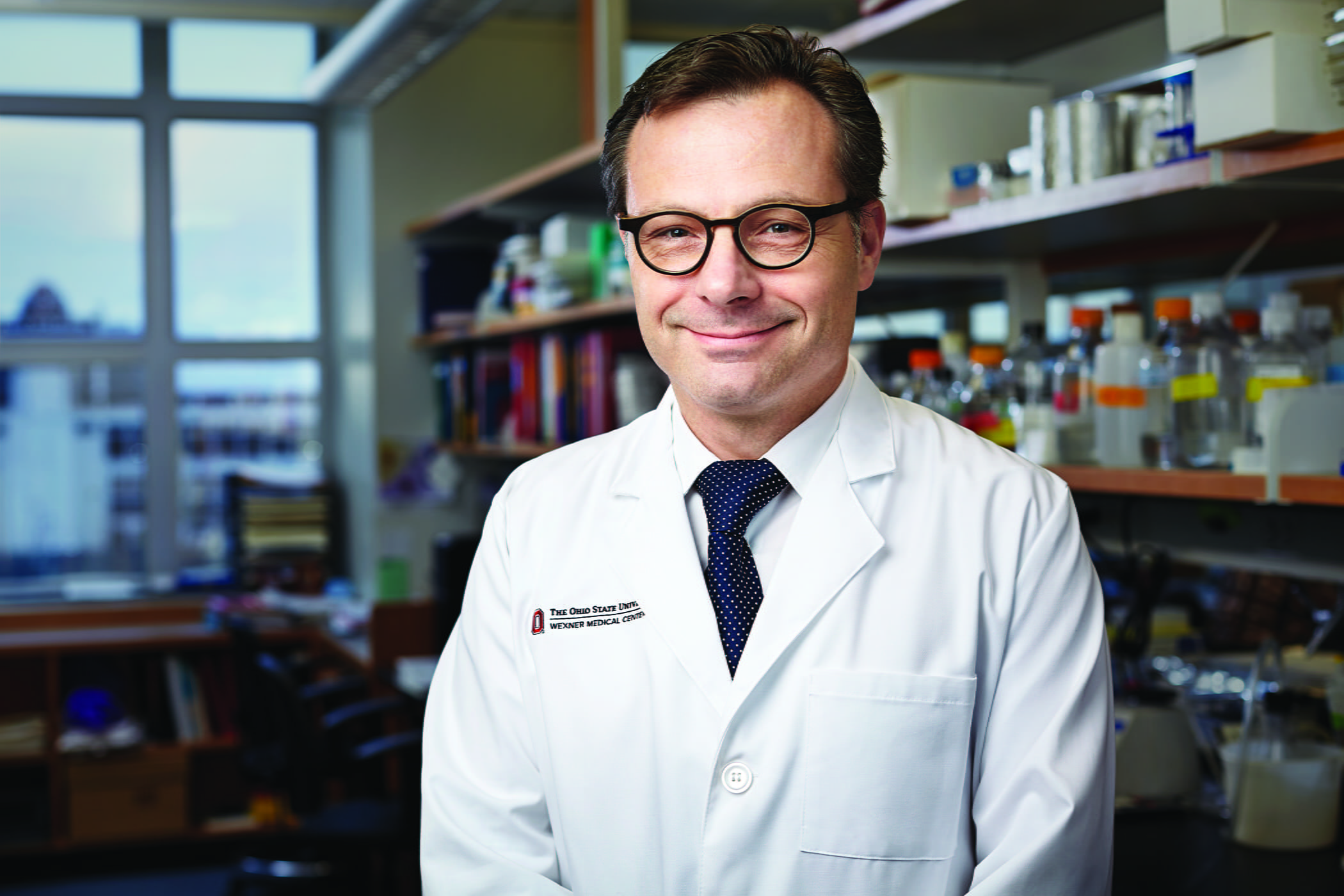March 7, 2016
 COLUMBUS, Ohio – New research led by The Ohio State University Wexner Medical Center is showing that spinal cord injuries can also cause a “paralysis” of the immune system that renders these patients more susceptible to pneumonia and other infections.
COLUMBUS, Ohio – New research led by The Ohio State University Wexner Medical Center is showing that spinal cord injuries can also cause a “paralysis” of the immune system that renders these patients more susceptible to pneumonia and other infections. Findings of the study are published in the March issue of the journal Brain.
“Pneumonia is the leading cause of death after acute spinal cord injury and is associated with poor neurological outcome. Patients with spinal cord injuries are 37 times more likely to die of pneumonia than those without these injuries,” said principal investigator Jan Schwab, a spinal cord researcher at
Ohio State’s Neurological Institute.
The main hypothesis was whether spinal cord injury also causes the immune system to become “paralyzed,” and thus less able to fight off infections such as pneumonia.
“Our research shows evidence that spinal cord injury directly causes increased risk for bacterial infection such as pneumonia in mice as well as in patients,” said Schwab, who coined the term “spinal cord injury – induced immune deficiency syndrome” with a group of German neuroscientists more than a decade ago.
However, when starting off it was completely unclear whether the immunological changes detected in the blood of patients after spinal cord injury are relevant and able to trigger higher infection rates or not.
“Now we were able to demonstrate that besides more obvious motor and sensory paralysis, spinal cord injury also induces a functionally relevant ‘immune paralysis’ (spinal cord injury immune deficiency syndrome) that contributes to the enhanced infection susceptibility,” Schwab said.
“To test this we had first to develop a controlled model of spinal cord injury associated experimental pneumonia as common models explicitly exclude the occurrence of infections, rather then investigating them,” Schwab said.
One of the aims of this study was to investigate whether spinal cord injury-induced immune deficiency syndrome elevates susceptibility to infection more than a non-spinal cord injury in a clinically relevant model.
Researchers analyzed whether mice with spinal cord injuries were impaired in their ability to mount a host response to combat a controlled infection compared to control (sham) mice with minor injury of the vertebral bones and unaffected spinal cord.
Six of the seven sham mice (86 percent) were able to clear inoculated bacteria completely from their lung within 24 hours. In contrast, after spinal cord injury, this ability was reduced to 35 percent (six of 17) and the majority 65 percent of spinal cord injury animals of different lesion levels displayed elevated bacterial loads in infected lungs after 24 hours.
In order to investigate whether finding are mirrored in patients suffering spinal cord injury the researchers analyzed 1,221 data sets from patients enrolled in the National Spinal Cord Injury Database from 1993 to 2006. Their analysis verified that patients who suffered a higher spinal cord injury were more likely to develop pneumonia. Importantly, the reduced host defense was dependent on the spinal cord injury lesion level in patients and mice becoming more prone to develop infections in case of high thoracic compared to low thoracic injuries.
“Prevalent infections such as pneumonia propagate mortality and disability in spinal cord injured patients. Hence, we are trying to better understand how pneumonia affects these patients so that we can develop more effective treatment strategies to reduce mortality and improve neurological outcomes,” Schwab said.
The research team included members from Charité – Universitatsmedizin, the German Centre for Neurodegenerative Diseases and the Centre for Spinal Cord Injury Trauma Hospital, all in Berlin, Germany; Boston Children’s Hospital Harvard Medical School in Boston; and the US-National Spinal Cord Injury Statistical Center.
The project received funding from the German Research Council, the German Academic Exchange Service, Wings for Life Spinal Cord Research Foundation, and the W.E Hunt and C.M. Miller Endowment.
# # #
Contact: Eileen Scahill, Wexner Medical Center Public Affairs and Media Relations, 614-293-3737, Eileen.Scahill@osumc.edu
